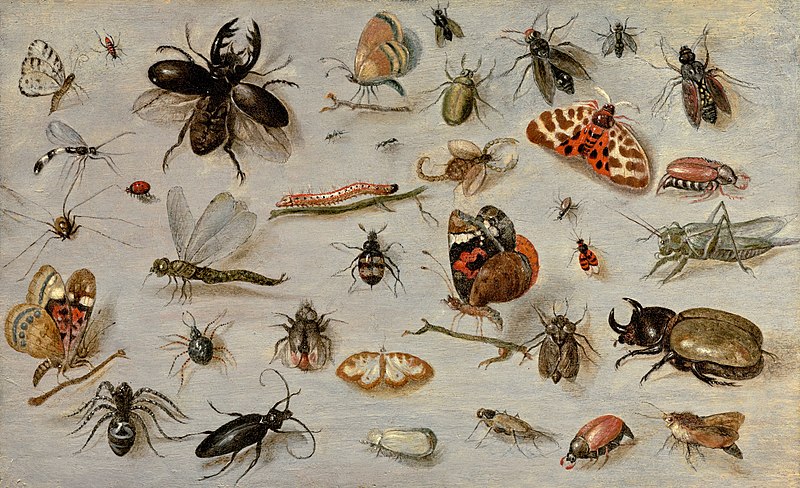28
Apr
One Quarter of Global Insect Population Lost Since 1990

(Beyond Pesticides, April 28, 2020) Roughly a quarter of the global insect population has been wiped out since 1990, according to new research published in the journal Science. Billed as one of the most comprehensive assessments to date, the study finds significant overall insect declines, but notes of some specific bright spots. While variation in the ongoing crisis is to be expected, ultimately the trends in the data show the need for immediate policy and regulatory action to protect the insect world as the foundation of global food webs.
The team of European scientists behind the research analyzed 166 studies spread out over 41 countries, and consisting of over 1,600 sites, with data beginning in the mid-1920s. Overall trends found declines in terrestrial insect biomass to be nearly 1% each year (~9% each decade). However, contrasting this data was a bright spot – freshwater insects were found to be increasing at an annual rate just over 1% (~11% each decade). The authors caution, however, that because fresh water covers only 2.4% of the earth’s surface, the increase may not be a good spatial representative of broader trends.
While North America appeared to show more significant declines when compared to Europe, there is some cause for alarm as more recent data shows an acceleration of insect losses on the European continent. “Europe seems to be getting worse now – that is striking and shocking. But why that is, we don’t know,” said study coauthor Roel van Klink, PhD, to The Guardian. One large and important confounder is the dearth of research from South America, Africa, and much of Southeast Asia.
Further analysis of the data on freshwater insects points to legal protections playing a role in the increase, such as the U.S. Clean Water Act and similar legislation in Europe. Protected areas such as nature preserves did display less significant declines, however the difference was not as robust as researchers expected. “We found that very striking and a bit shocking – it means something’s going wrong there,” said Dr. van Klink to The Guardian.
There was little evidence that climate change was playing a role at either local or global scales, however land use and urbanization was found to have moderate associations with declines. The anthropogenic factors with this trend – pesticide use, light pollution, habitat destruction, are massively under-regulated and can be addressed by elected officials.
While the attempt by researchers and some scientific minds to use this study to present the insect apocalypse as nuanced is of course accurate, it risks pushing the discussion into one where the public is told it is too “complicated” and that more research is needed before action is taken. Powerful industry forces – from the agrichemical industry, to fossil fuel producers, construction companies, and other groups with considerable lobbying arms, make use of scientific nuance, “mystery,” and the need for more data by presenting it as a reason for inaction. While in Europe the precautionary approach holds sway, in the United States many elected officials will opt for inaction unless the data is certain and the public is overwhelmingly in favor of change (and even then, as many advocates know, the road is uphill).
Make no mistake – the public should continue be alarmed by these reports. As renowned entomologist Dave Goulson, PhD, told The Guardian, “People should be as concerned as ever about insects. It is great news that some aquatic insects seem to be increasing, probably from a very low level. But the bulk of insects are terrestrial and this new study confirms what was already clear: they have been declining for many decades.”
It is likely that the declines we are seeing in many bird species are closely linked to insect declines. Recent research finds that three billion birds, or 29% of bird abundance has been lost since the 1970s. This is also a nuanced finding – waterfowl and raptors have increased more than 50% since that time – likely for similar reasons – there was real legal and regulatory action taken to protect these species. The nuance is a reason for urgent action now, not for further delay.
Insects remain in significant decline. Monarchs are near extinction and beekeepers continue to experience declines that are putting them out of business. We continue to lose mayflies, the foundation of so many food chains, and fireflies, the foundation of so many childhood summer memories, for reasons that can be easily prevented with strong laws and leadership. We can stop pesticide use and habitat destruction endangering mayflies, bees, and monarchs and stop light pollution by preserving the night sky for fireflies.
For more information on the insect apocalypse, see Beyond Pesticides article in our Pesticides and You newsletter, Tracking Biodiversity: Study Cites Insect Extinction and Ecological Collapse.
All unattributed positions and opinions in this piece are those of Beyond Pesticides.
Source: Science, The Guardian










